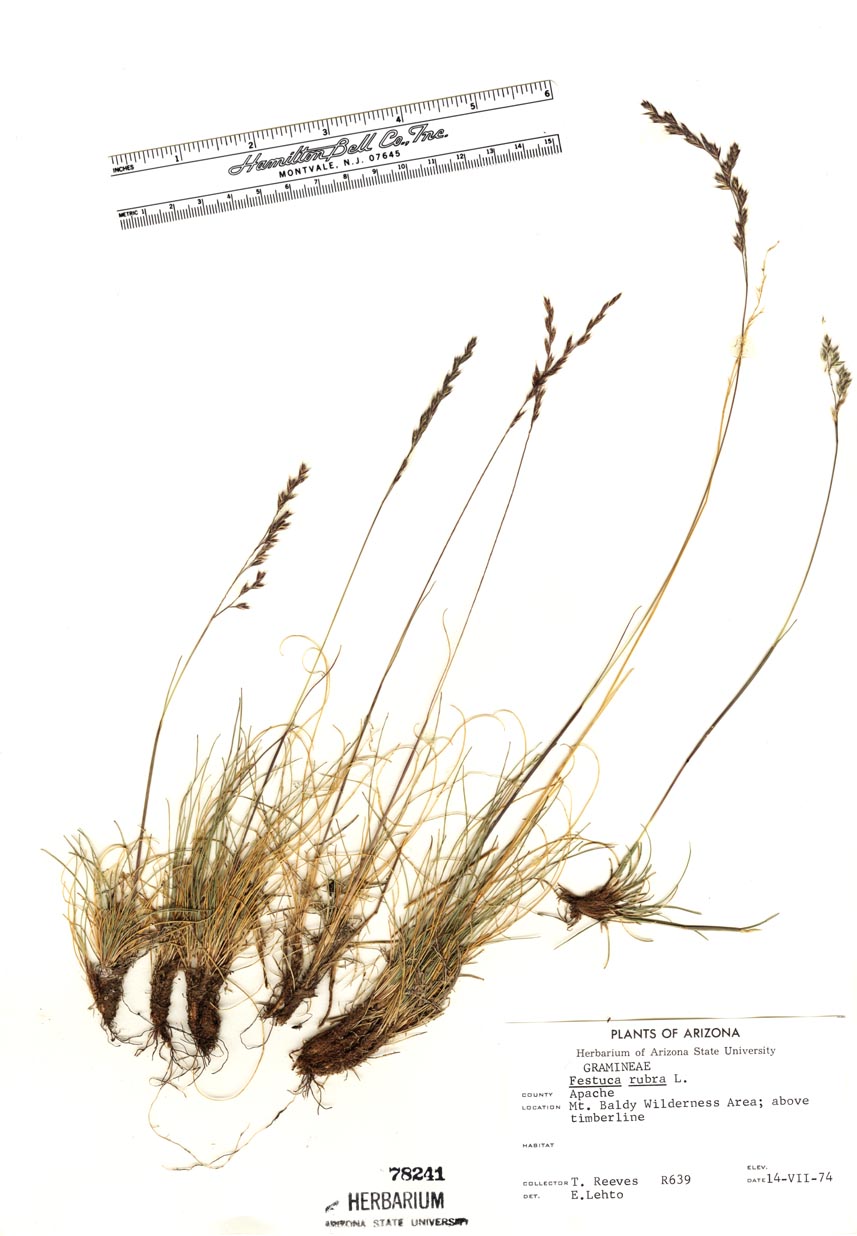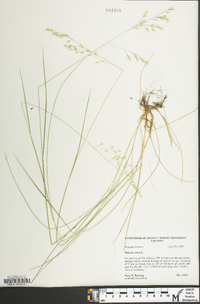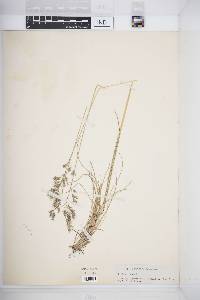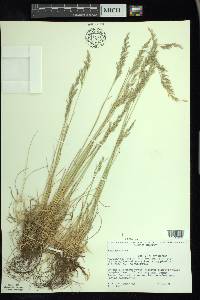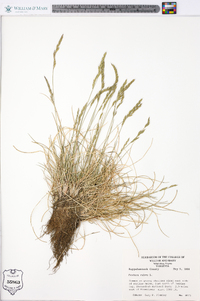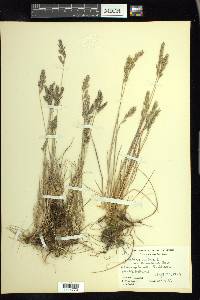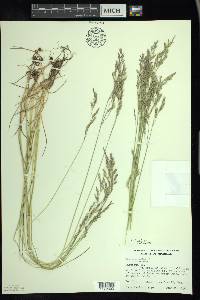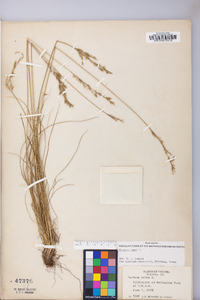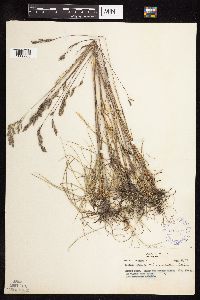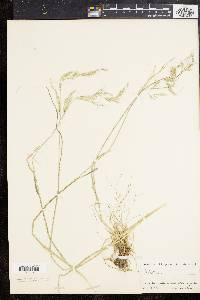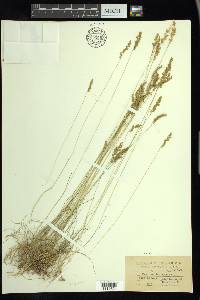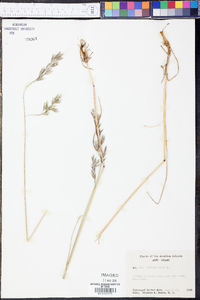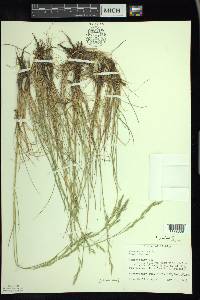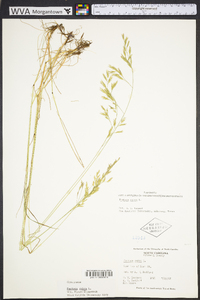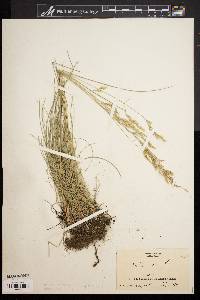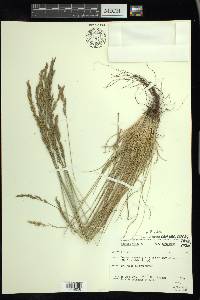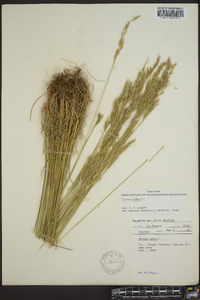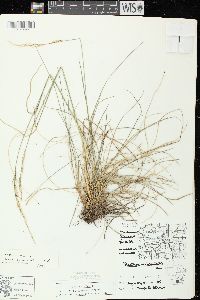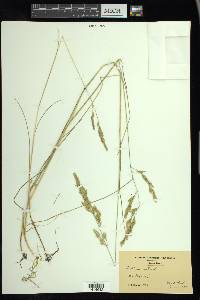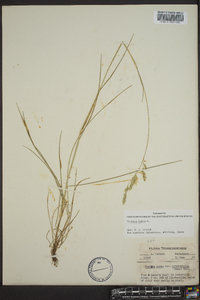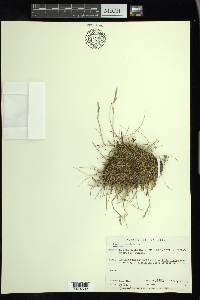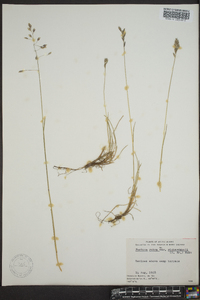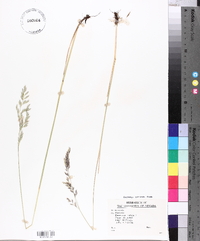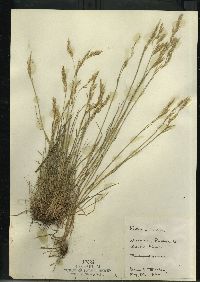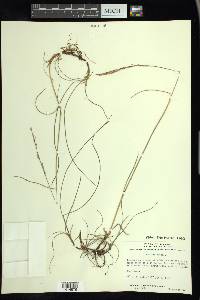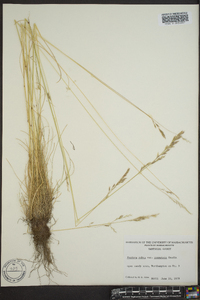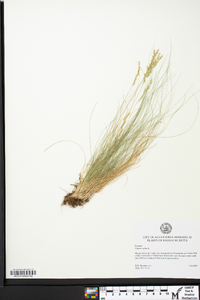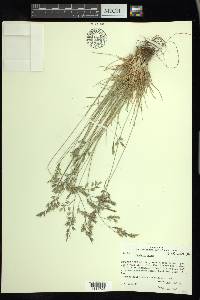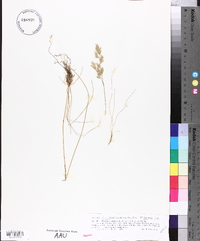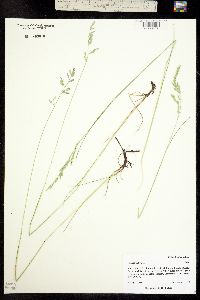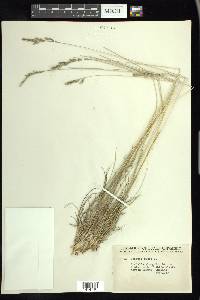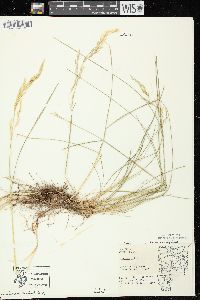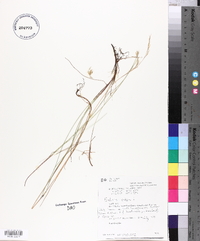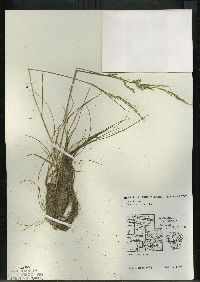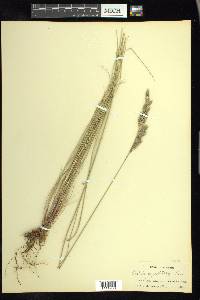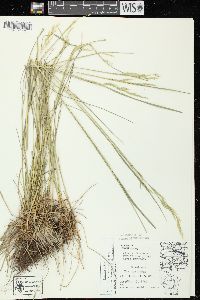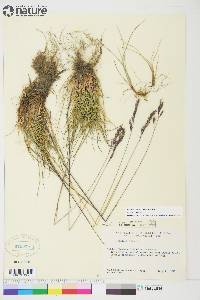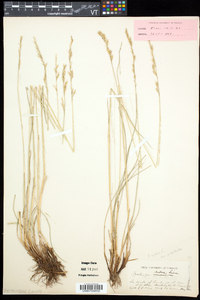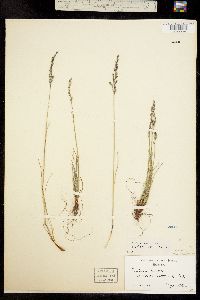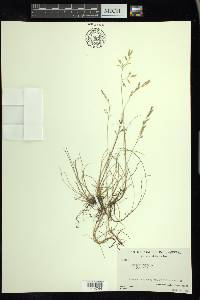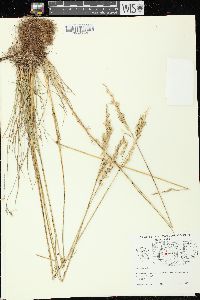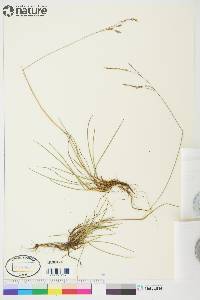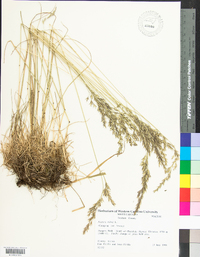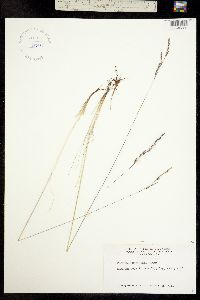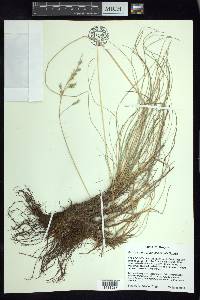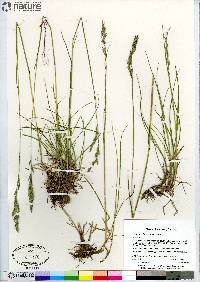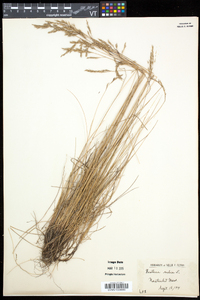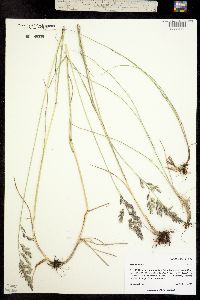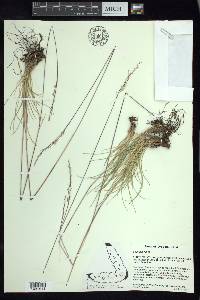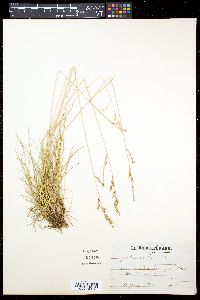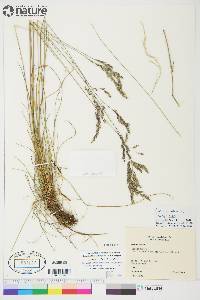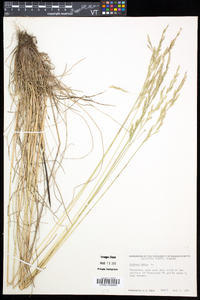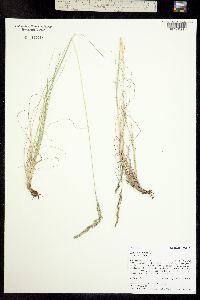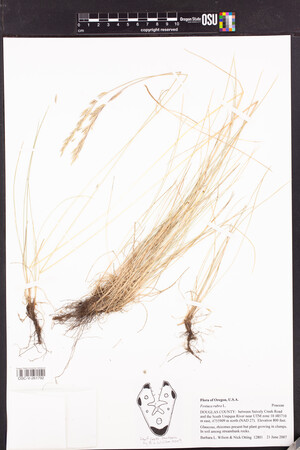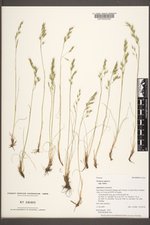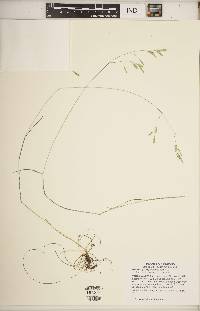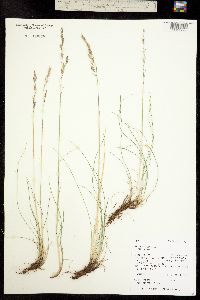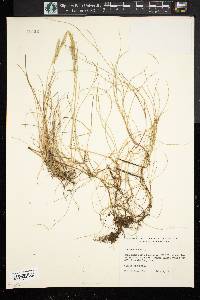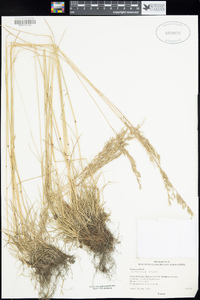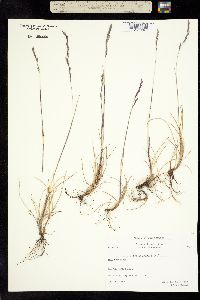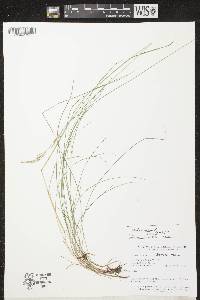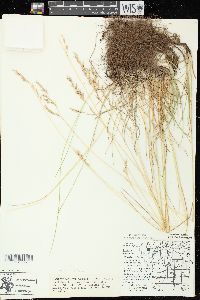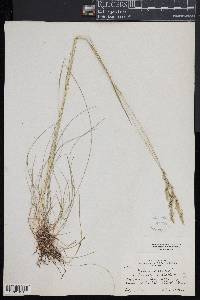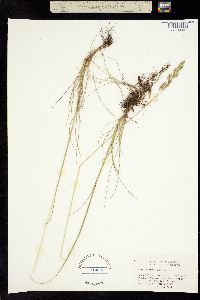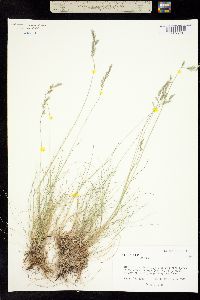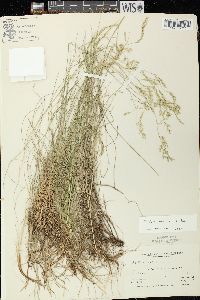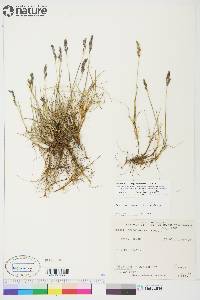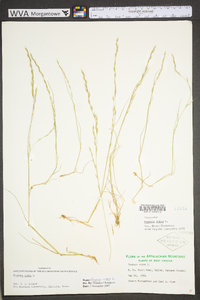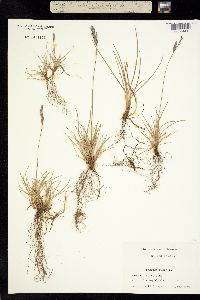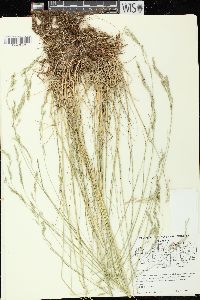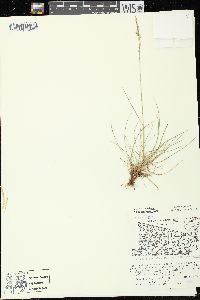
|
|
|
|
Family: Poaceae
Red Fescue, more...ravine fescue, Chewing's Fescue, Fetuque Rouge
[Festuca duriuscula L., moreFestuca duriuscula var. duriuscula , Festuca duriuscula var. rubra (L.) Alph. Wood, Festuca egena V. Krecz. & Bobrov, Festuca glaucescens Hegetschw. & Heer, Festuca ovina subsp. duriuscula , Festuca ovina subsp. rubra Hook., Festuca ovina var. rubra (L.) Sm., Festuca rubra subsp. glaucodea Piper, Festuca rubra subsp. megastachya , Festuca rubra var. clarkei Stapf, Festuca rubra var. fallax , Festuca rubra var. glaucescens Wahlenb., Festuca rubra var. pauciflora Scribn.] |
FNA 2007, USDA, Ann. Checklist GCNP 1987, Field Guide to Forest & Mtn. Plants of N AZ 2009 Common Name: red fescue Duration: Perennial Nativity: Non-native Lifeform: Graminoid General: Rhizomatous, loosely to densely tufted, stems 15-100 cm tall, with folded leaves and an open or loosely contracted panicle; reddish in color at the base of the leaves and spikelets. Vegetative: Culms erect or decumbent, glabrous, sometimes single; sheaths closed for 3/4 their length when young, disintegrate into fibers as they age; blades mostly basal, folded or rolled, 5-30 cm long, 1-2 mm wide, with 5-7 usually conspicuous ribs; ligule <1 mm long. Inflorescence: Narrow panicle 3-25 cm long, open or loosely contracted, with 1-3 branches per node, lower branches have 2+ spikelets, branches are erect or spreading; spikelets 7-17 mm long, with 3-10 florets; glumes unequal, exceeded by distal florets, 2-8 mm long, 1-3 veined; lemmas 4-10 mm long, with awns <1-4 mm long; paleas same length as lemmas or slightly shorter; anthers 2-4 mm long. Ecology: Found in grasslands, streambanks, open woods, and disturbed areas at 8500-11000 ft. (2600-3400 m); flowers July-August Distribution: Throughout the United Sates except South Dakota, Kansas, Oklahoma, Arkansas, Louisiana, Mississippi, and Florida Notes: Is morphologically diverse, with a complex of subspecies, and is widely distributed. Also, hybridization and introgression between taxa may be occurring, and many cultivars have been developed and widely distributed. All these factors add to the difficulty in identification of taxa within this complex. Ethnobotany: Is used for soil stabilization and burn regeneration. Etymology: Festuca is Latin for grass stalk or straw, while rubra, also Latin, means red. Editor: LKearsley, 2012 Culms glabrous, 3-10 dm, usually loosely tufted, often decumbent at base, frequently rhizomatous; young shoots diverging from the axils and breaking through the base of the sheath; lower sheaths closed and reddish-purple when young, soon disintegrating into loose reddish-brown fibers; blades glabrous, 0.7-2 mm wide, with (3)5 ribs, the sclerenchyma in 7-9(11) discrete strands opposite the veins; infl 5-20 cm, narrow, with ascending branches or in some forms loosely spreading, the lowermost branches (or at least one of them) naked for mostly (4)5 mm below the first pedicel; spikelets 4-7-fld; first glume subulate, 2.6-4.5 mm, the second broader, 3.5-5.5 mm; lemmas 4.8-6.1 mm, the longest awns 1-3 mm; 2n=14, 28, 41, 49, 50, 56, 70. In a wide range of open habitats, widely distributed in n. Europe and in N. Amer., in our range from Que. to Wis., s. to Ga. and Mo.; plants of the coastal region thought to be native, but some or all of the inland forms may be intr. (F. prolifera, a viviparous form with some of the lemmas elongate and foliaceous, occurring from Nf. to the mts. of N. Engl.) Gleason, Henry A. & Cronquist, Arthur J. 1991. Manual of vascular plants of northeastern United States and adjacent Canada. lxxv + 910 pp. ©The New York Botanical Garden. All rights reserved. Used by permission. |
This project was made possible in part by the Institute of Museum and Library Services [MG-70-19-0057-19].
Powered by Symbiota

